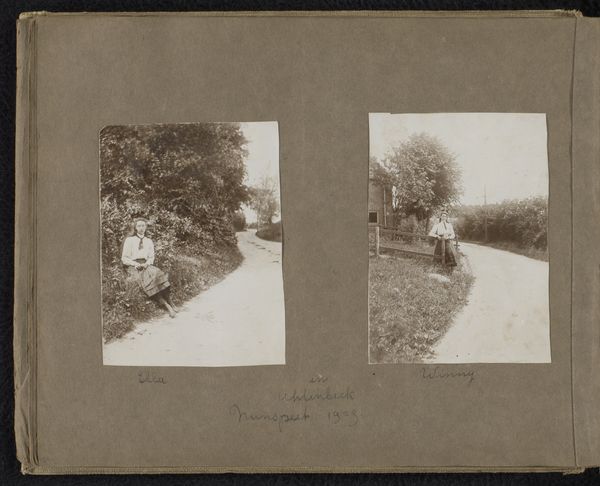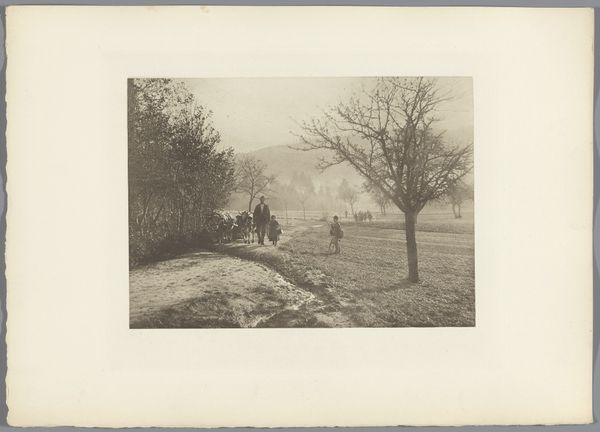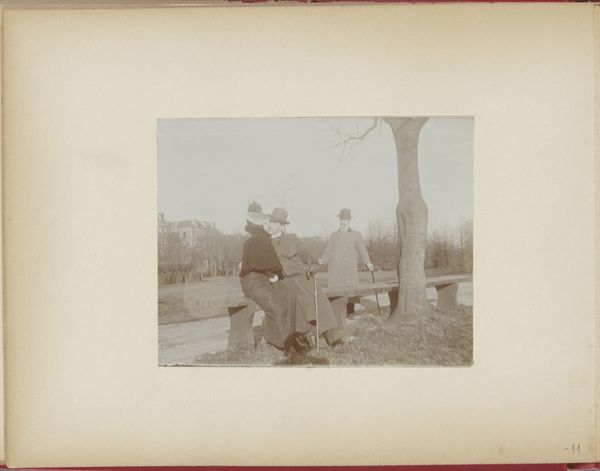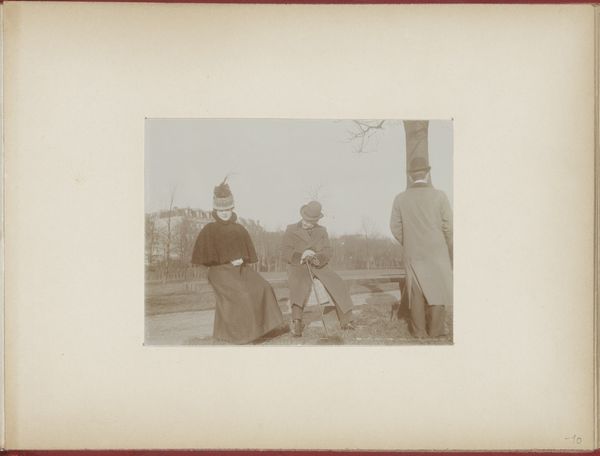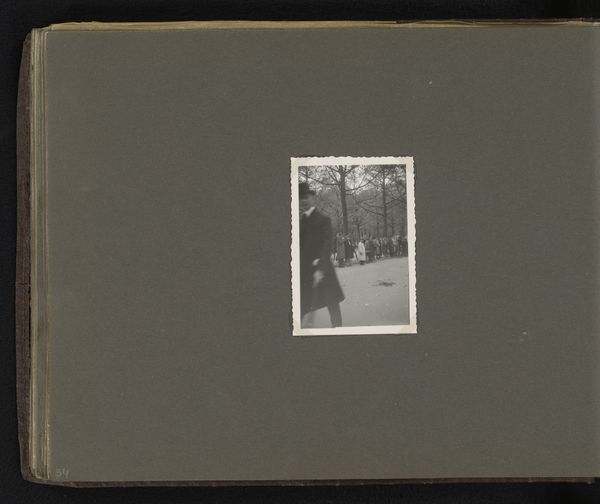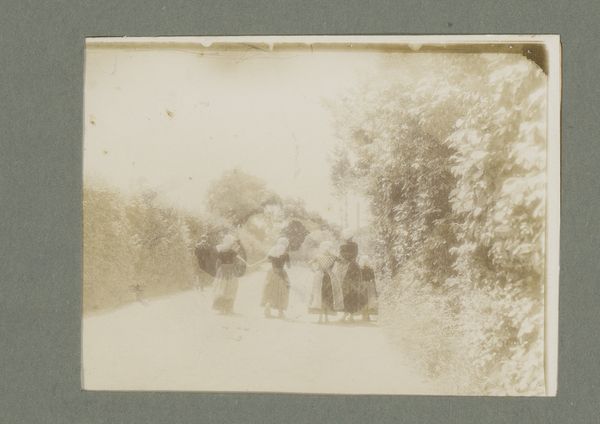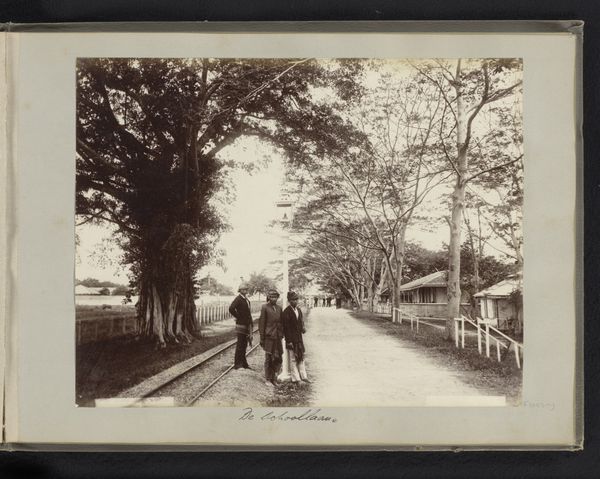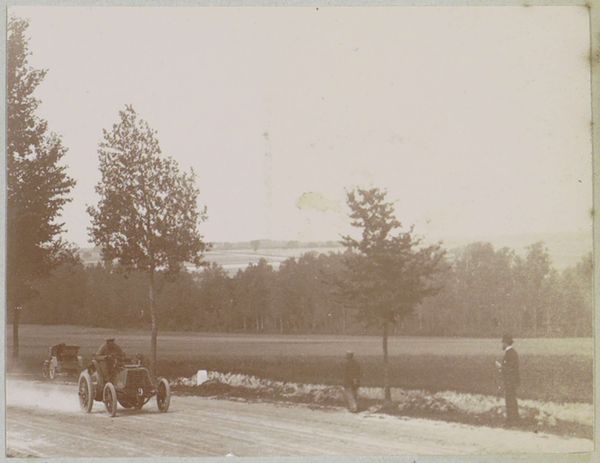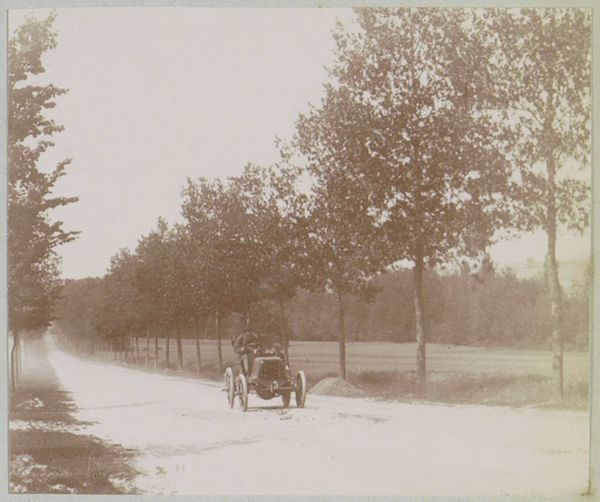
Dimensions: height 111 mm, width 85 mm
Copyright: Rijks Museum: Open Domain
Curator: I'm immediately drawn to the wistful atmosphere in this piece, a gelatin-silver print made around 1899. There’s something very sweet, very innocent, about the couples promenading through the Amsterdam park depicted in Gerardus Aalbersberg’s photographic work, "Het jonge paar uit het fotoverhaal wandelend in een Amsterdams park." Editor: A photographer working in the Netherlands in 1899… I’d love to travel back to that park, observe this society. Are those reflections I’m seeing on the ground in the lower-left image? The wet surface adds to this sensation of Romantic melancholy. Curator: Indeed! This era saw the rise of Pictorialism within photography. Pictorialists manipulated the image in order to create painterly effects. Here, Aalbersberg embraces soft focus, giving the image an almost dreamlike quality. Editor: It feels almost as though these figures are lifted out of a novel… They could just fade into mist. Though the setting seems somewhat formal, doesn’t it feel strangely vulnerable? They appear self-conscious in a way that belies their formality. Curator: In the late 19th century, there was a shift away from the objective record, favoring emotionality. It certainly plays into the rise of the romanticist movement at the time and how ideas of sentimentality were perceived in a budding era of art. And with the inclusion of “genre-painting”, one can tell how Aalbersberg intended on using common and simple motifs in everyday life to display an era. Editor: It makes me think of the limitations imposed on expressions of love, both by societal convention and even by the relatively young medium of photography. I'm almost projecting narratives onto the subjects. I mean, aren't they too? Are these photos parts of a larger narrative project that just want to tell stories with common simple motifs? Curator: Most likely, the photograph being a reproduction indicates Aalbersberg’s clear attention to mass cultural consumption. With this said, one can view these as glimpses into evolving social conventions that governed the era and how people aimed to grasp sentimentality in a photo. Editor: So, a final, quiet observation? It is difficult not to be swept up in the emotion these scenes invoke. A great sense of how common, day-to-day social relations between the Dutch people were expressed in a visual context is what makes it amazing. Curator: Exactly. It captures that sense of quiet beauty, a reflection on the passage of time and intimate emotion.
Comments
No comments
Be the first to comment and join the conversation on the ultimate creative platform.

